Yingfan Jia
Liquid Border
River is a mighty and constantly-evolving force, leaving behind an intricately designed and constantly changing system. Not just a river, the Rio Grande stretches all the way from Colorado before intersecting with the US-Mexico Border in southern Texas - a point where the powerful forces of nature now merge with a clearly-defined political boundary. The outcome of this is a unique ecological niche, which may often go unnoticed despite its distinctiveness.
Texas is famous for its farms and ranches, and the Rio Grande Valley of South Texas was once an agricultural hub. However, urbanization and the depletion of water resources due to climate change and over-extraction of groundwater have drastically impacted the region’s ability to sustain itself agriculturally. Suitable profits were not forthcoming. The landowners would forcibly abandon their lands and hardly spend money to revegetate those lands if no added value or profit was ensured. Shrinking along with the farmlands are the 5% left pristine native riparian thorn scrub woodlands. They serve as a crucial migration corridor for local wildlife.
The thesis is to give voice to the rights of nature and the non-human life in this region and see whether centralizing and recovering the fragile environmental systems humans messed up might suggest a new way of living with the border landscape instead of constantly politicizing it. Overtime, by recalling and working with nature’s innate intelligence, we can raise the new border consciousness of a responsible human-nature relationship on both sides of this liquid ‘border’ through time.
Image
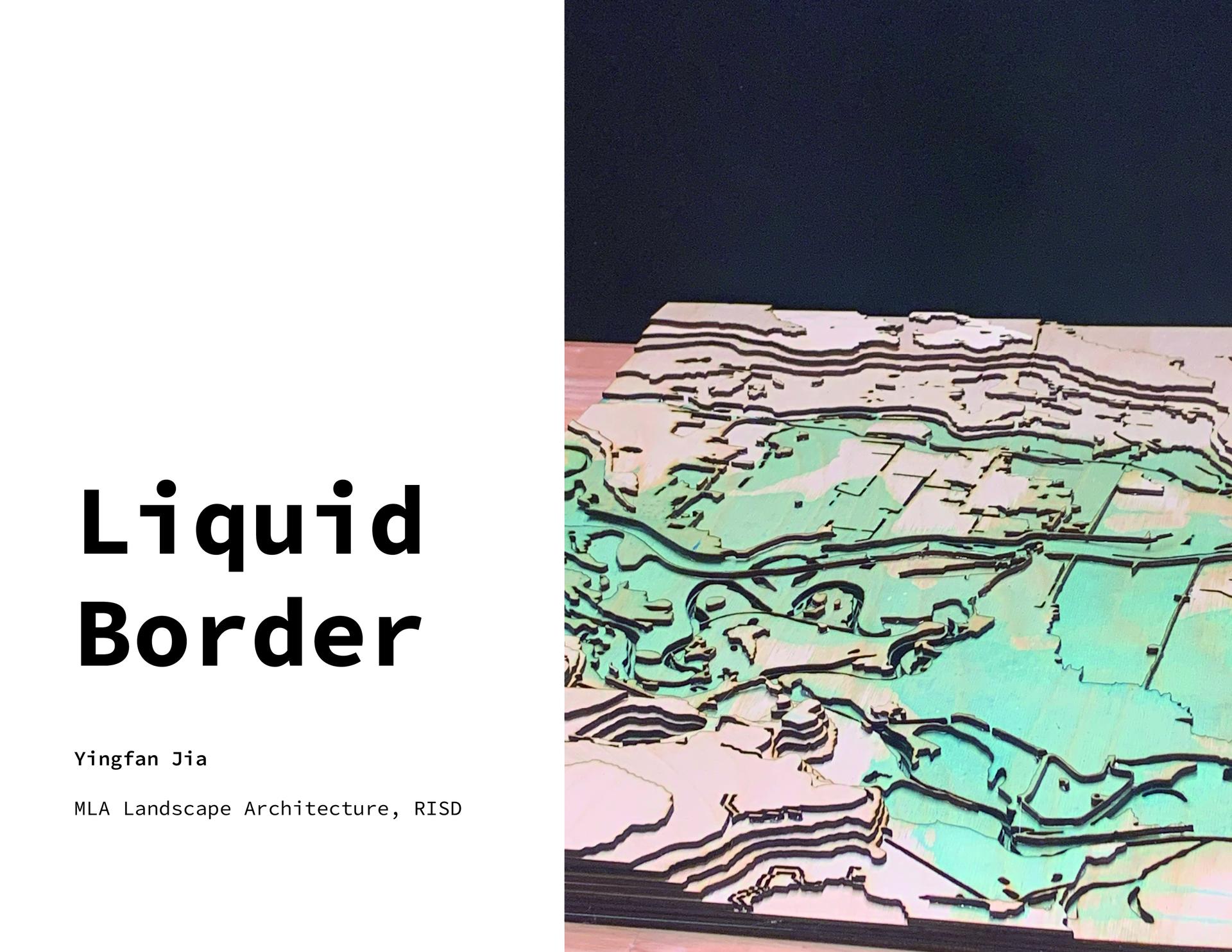
The dynamic extension of the river becomes clear when observing the historical development of a watercourse over long periods. The constant shifting of the river’s course that can shape entire landscapes creates a complex, continually changing system
Image
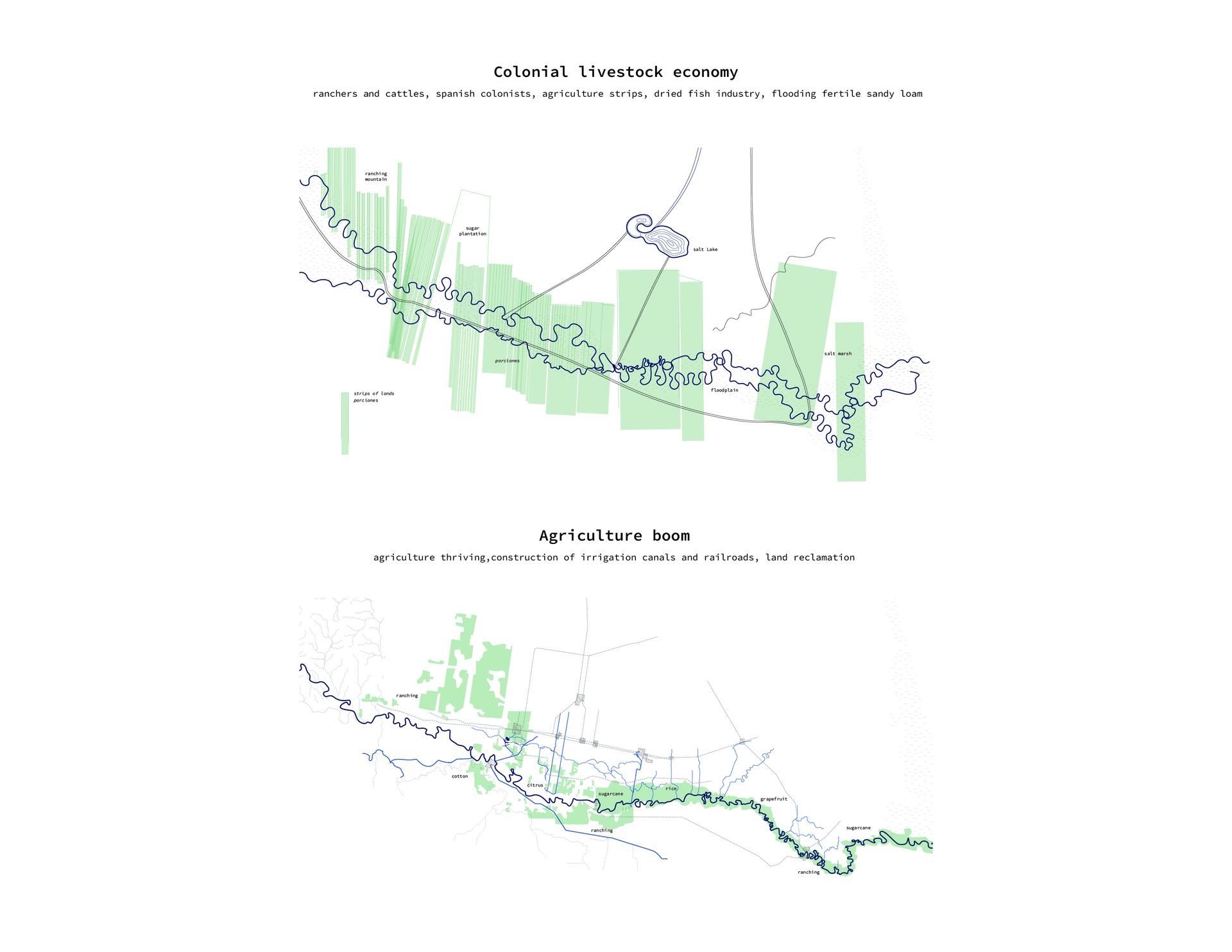
From colonial economy to agriculture- The loss of pristine native habitats
Image
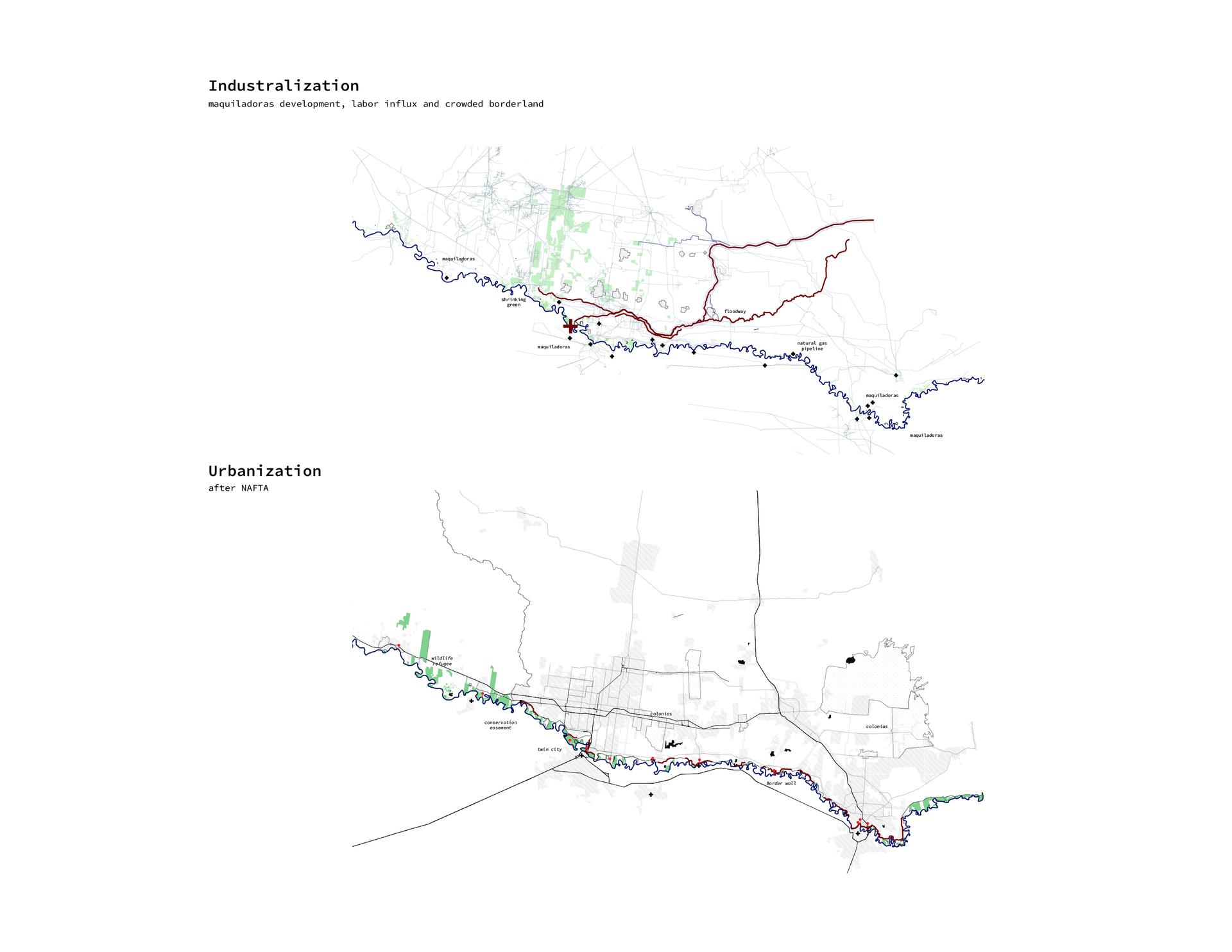
Texas is famous for its farms and ranches, and the Rio Grande Valley of South Texas was once an agricultural hub. However, urbanization and the depletion of water resources due to climate change and over-extraction of groundwater have drastically impacted the region’s ability to sustain itself agriculturally. Suitable profits were not forthcoming, The owner would forcely abandon their lands and hardly spend money then to revegetate those lands, if no added value or profit is ensured. And only 5% of the native riparian thornscrub woodlands left but serve as a crucial migration corridor for local wildlife.
Image
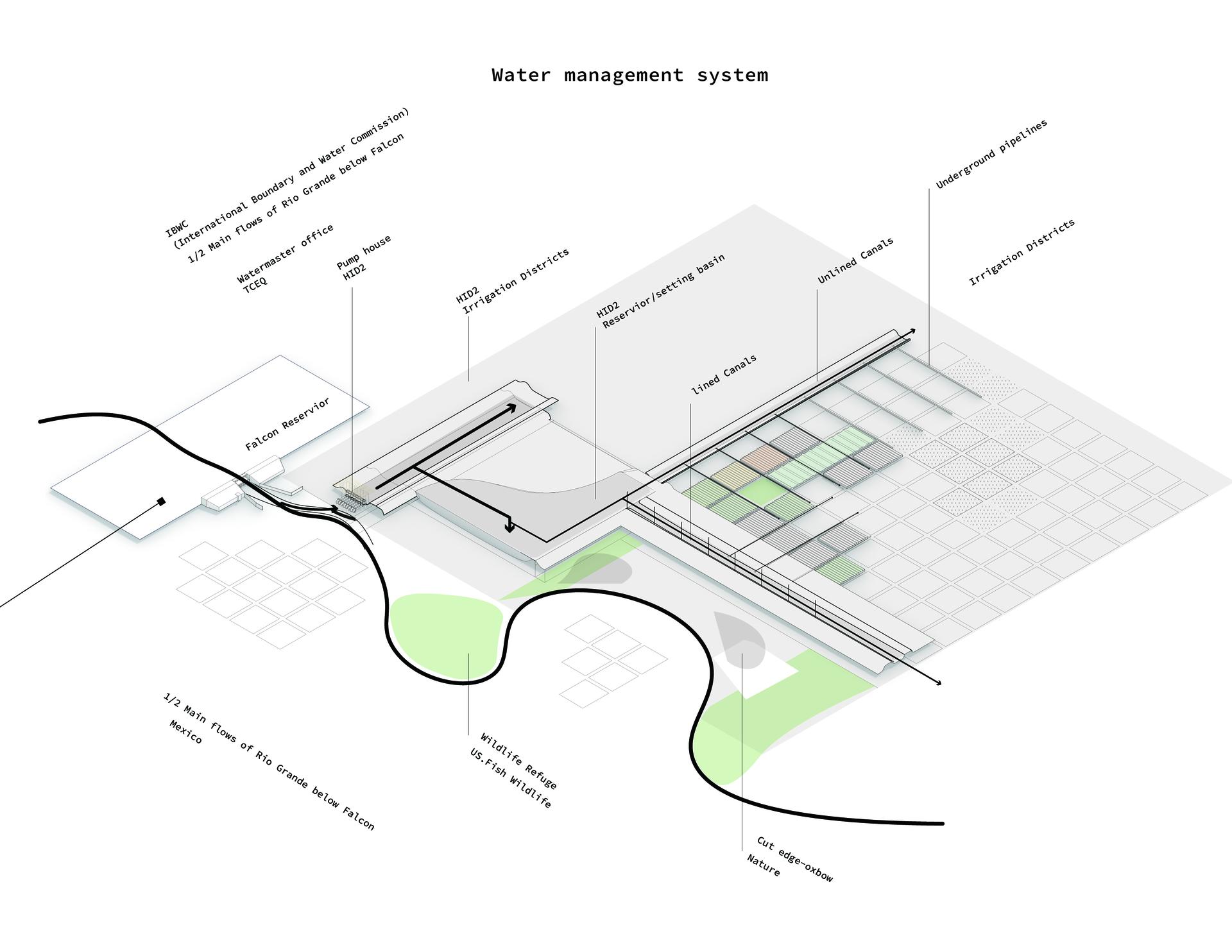
How do people get water from the river and distribute it into each parcel of farmlands?
The water rights and the irrigation systems.
Image

A timetable showed the crops plantinter demand in the Lower Rio Grande Valley. Each crop has its own water demand. It matched the hydrological and climatic cycle in the lower Rio Grande Valley. - A better planting plan is needed for each farmer to live with the frequent water shortage.
Image

It is this manifestation of the conflict that now threatens the local environment. The Rio Grande Valley is, by all natural criteria, a continuation of Mexico. It’s actually a floodplain, extending outward on either side of the river. Wildlife doesn’t recognize political borders, and so there’s a large amount of movement across the river (which is rather narrow at points) and up and down its banks. Dammed migration routes and affected national wildlife refuge. Border has its ecological and natural subjects beyond political consciousness.
Image
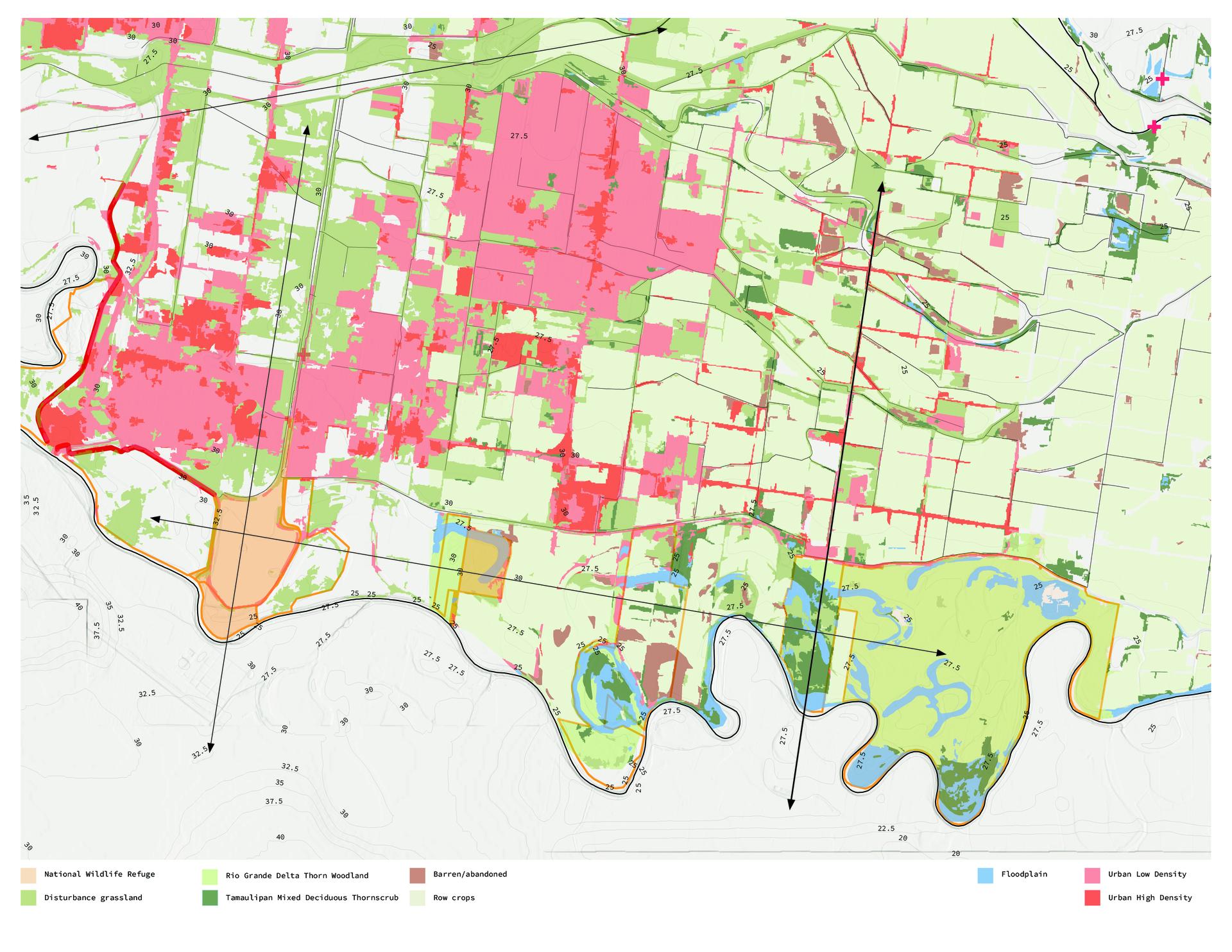
In a former life most abandoned farmlands in the valley were thornscrub brush and woodlands, an ecosystem now considered rare due to agricultural development and urban expansion. Now a land in between, abandoned farmland is neither wilderness nor cultivated, and often is in need of restoration and recovery to some semblance of natural conditions, frequently through human intervention.
Image
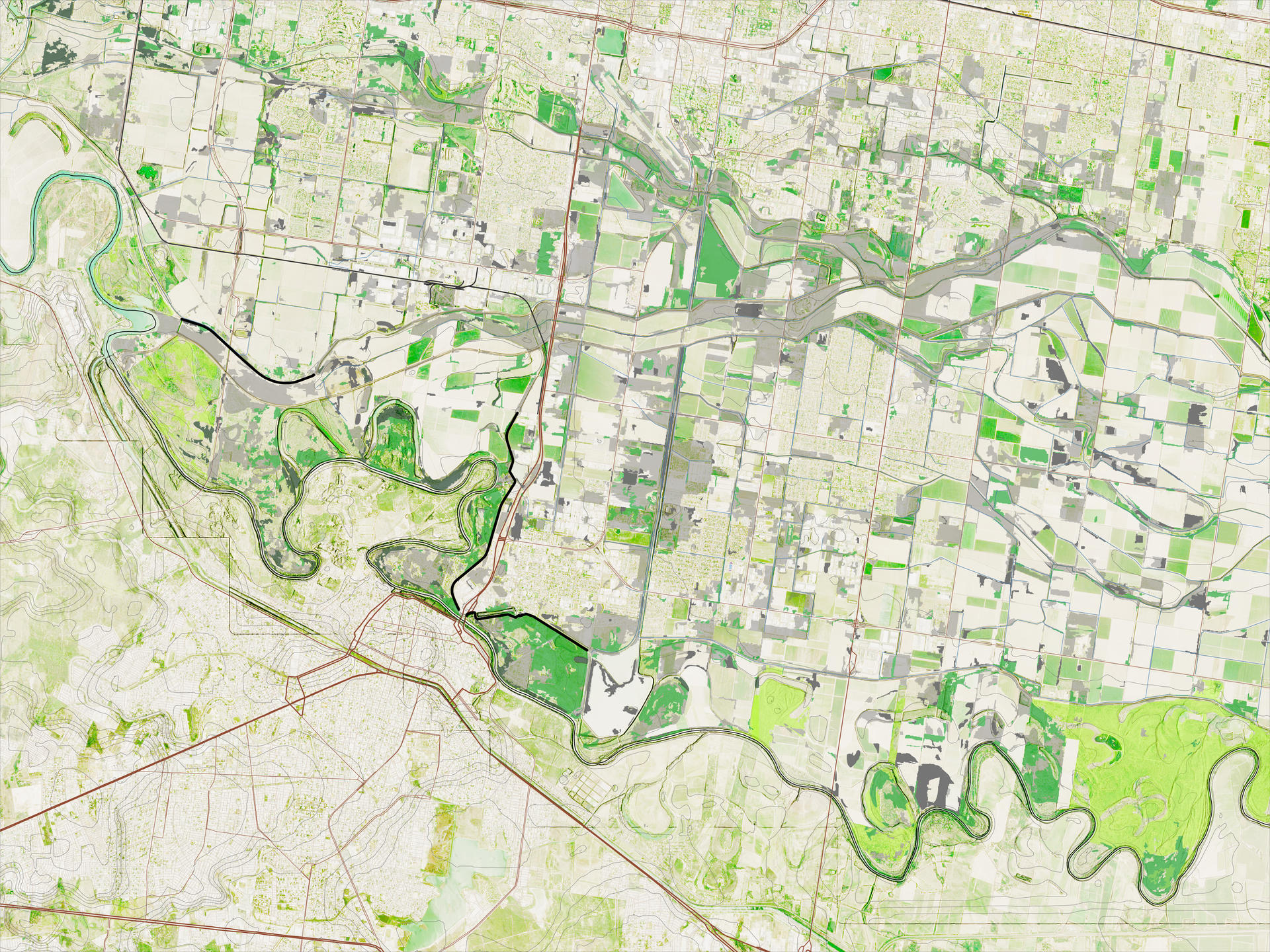
Existing condition. Grey means disturbed grasslands and abandoned farmlands. The riparian corridor has been segregated by farmlands and urban contexts on both sides of the river/border.
Image
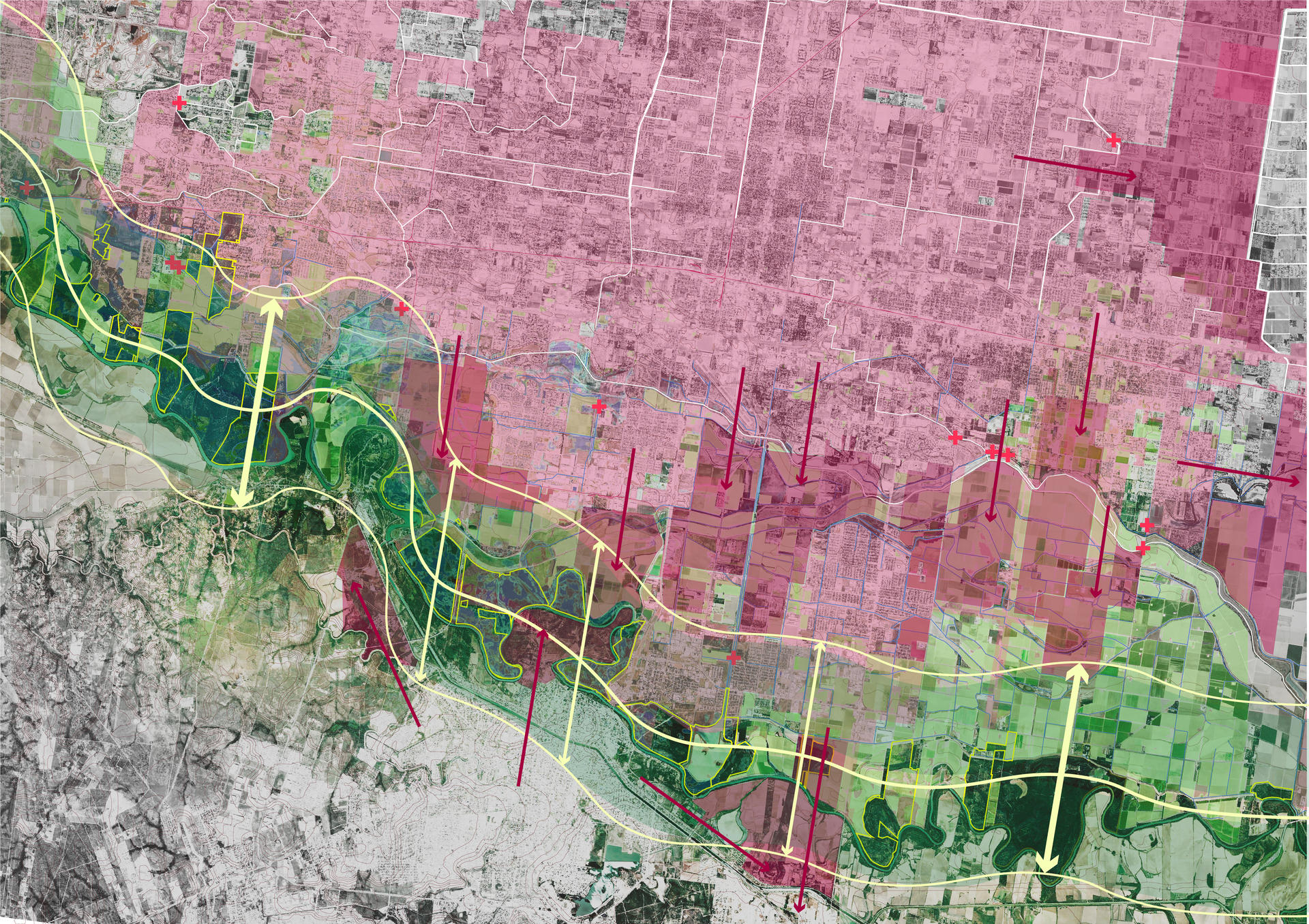
Building a wall on the border would create more walls. And the constructed binational bridges are not only bridging two countries but two races and populations with diverse cultures and history behind them. The coexistence of the border wall and international trading bridges already showed the conflict between border management policies and actions. Urbanization will not stop and migration will not stop unless we care and plan for it.
Image
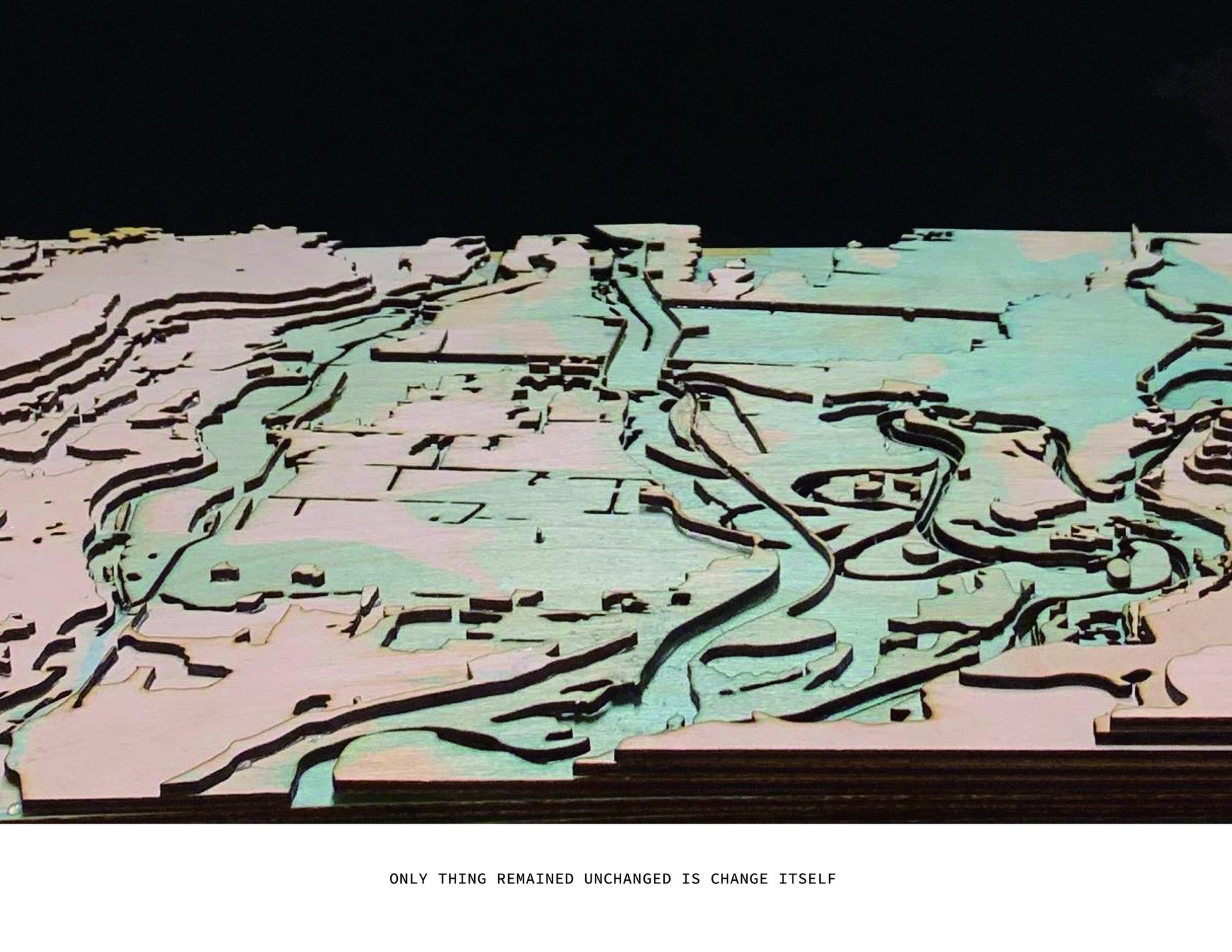
Only thing remained unchanged is change itself

